About the People’s Mojahedin Organization of Iran (PMOI/MEK)
The People’s Mojahedin Organization of Iran (PMOI), also known as Mujahedin-e-Khalgh (MEK), is the largest and longest-standing Iranian opposition group with a five-decade history of struggling for freedom and democracy in Iran. The PMOI/MEK is also part of the National Council of Resistance of Iran (NCRI), a large coalition of dissidents and organizations that support democratic regime change in Iran.
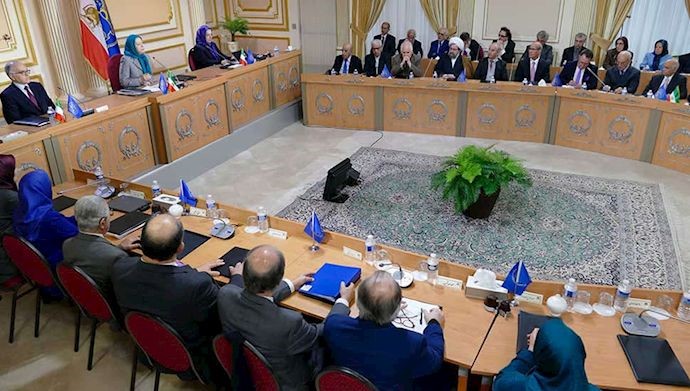
The NCRI and MEK are committed to the establishment of a secular, democratic and non-nuclear state in Iran. The principles the PMOI/MEK adheres to include freedom of expression and press, respect for the Universal Declaration of Human Rights, gender equality, promotion of peace in the Middle East.
Massoud Rajavi, the leader of PMOI/MEK, a prominent political prisoner during the pre–1979 revolution, has been at the helm of the Iranian opposition organization’s struggles since 1972, when the Shah regime executed the founders of PMOI/MEK. Maryam Rajavi, Massoud Rajavi’s spouse, is the president-elect of the NCRI.

The PMOI/MEK has had a major role in preventing the Iranian regime from obtaining atomic weapons by first unveiling its nuclear program in 2002. The organization has also been a prominent source of information about Tehran’s terrorist agendas in the Middle East region and its human rights violations in Iran. The Iranian regime has executed over 120,000 PMOI/MEK members and supporters since 1981, after it banned all Iranian opposition groups in the country and conducted a violent and widespread crackdown on all Iranian dissidents inside and outside Iran.
Despite all the trials and tribulations that the PMOI/MEK has been through in six decades since its founding, in continues its struggle for freedom and democracy in Iran to this day.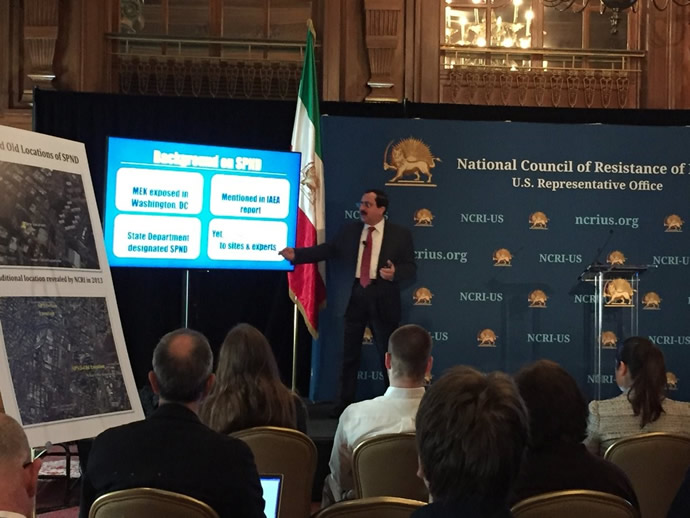

The MEK first revealed Iran’s nuclear program
In 2002, with the help of its network of supporters inside Iran, the MEK first exposed the Iranian regime’s secret nuclear program by revealing the existence of two undisclosed nuclear facilities at Natanz and Arak. The Iranian opposition’s revelations triggered an international effort to curb the Iranian regime’s nuclear ambitions and prevent Tehran from obtaining atomic bombs.

The MEK and NCRI have consistently maintained a position that Iran’s nuclear program and its uranium enrichment facility should be totally dismantled, and have remained a pertinent source about Tehran’s covert activities and has continued to disclose the secret aspects of Iran’s nuclear activities.
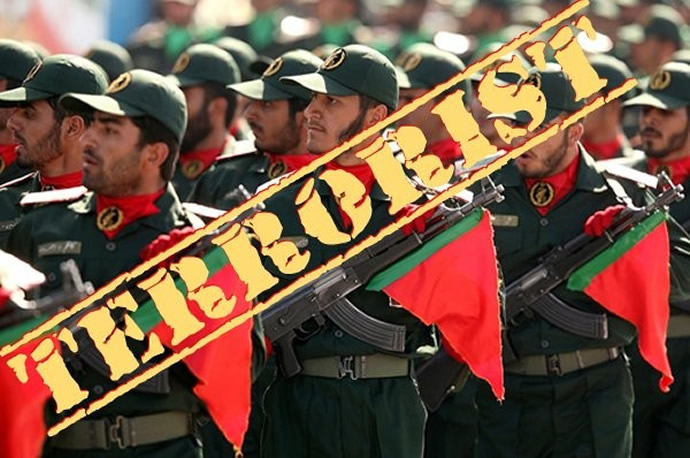
The MEK’s role in opposing the Iranian regime’s foreign interventions
The PMOI/MEK has long opposed Tehran’s meddling in neighboring countries, which has been paid from the Iranian people’s pockets. The Iranian regime’s foreign intervention has ruined Iran’s economy and has plunged the region in chaos, fueling sectarian conflicts and creating the breeding ground for the rise of terrorist and extremist groups.
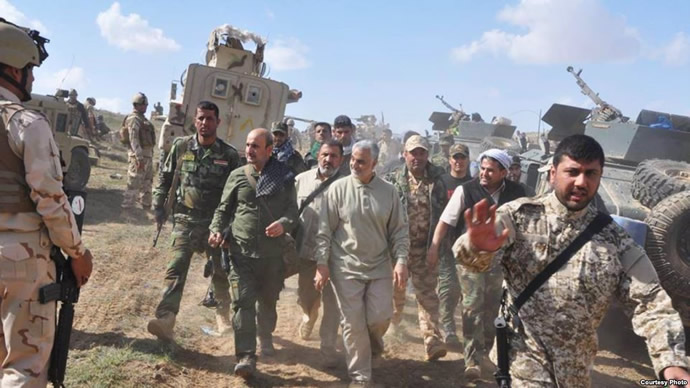
The Iranian opposition movement has had a prominent role in revealing the details of Iran’s violent agendas in Iraq, Syria, Yemen and Lebanon. In recent years, the MEK and NCRI exposed the names of thousands of the Iranian regime’s agents involved in terrorist activities abroad, especially in Iraq and Syria, where Tehran has supported the regime of Bashar al-Assad in murdering hundreds of thousands of innocent civilians.
The MEK and NCRI maintain amicable relations with the Syrian opposition and supports the Syrian people’s struggle for freedom from dictatorship. The Iranian opposition believes in peaceful coexistence with the countries in the region and contribution to global peace and security.

MEK, victim of the Iranian regime’s terrorism and human rights abuses
After the 1979 revolution, when Khomeini assumed power in Iran, the PMOI/MEK had a very prominent role in vouching for civil liberties and human rights. During a two-and-half-year period, the members and supporters of MEK widely participated in social gatherings and meetings that called on the ruling regime to respect the rights of the people.
In 1981, Khomeini’s regime imposed a ban on all Iranian opposition groups, including the MEK, and engaged in a widespread and violent crackdown on all dissidents. In the years that ensued, the Iranian regime rounded up tens of thousands of MEK’s members and supporters and executed them. In the summer of 1988 alone, under a fatwa by Khomeini, the Iranian regime executed 30,000 political prisoners, most of them members and supporters of MEK. The event, which has become known as the “1988 massacre,” has been recognized by lawyers and jurists as a crime against humanity and genocide. In 2022, a former prison guard in Gohardasht prison was sentenced to life in prison in Sweden for his role in the 1988 massacre. 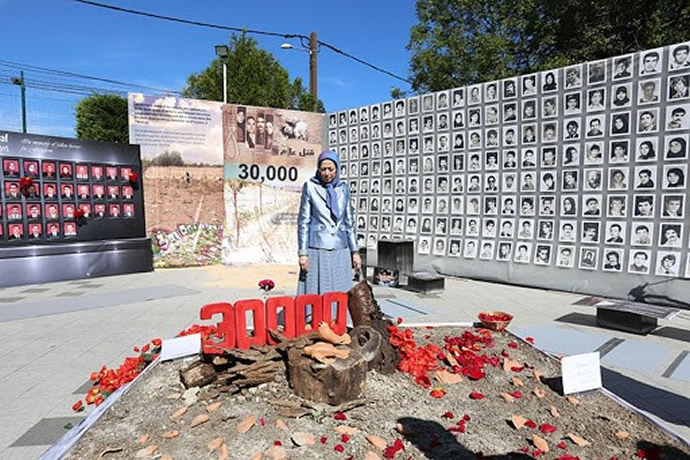
In tandem with the domestic suppression of the Iranian opposition, the mullahs’ regime staged dozens of terrorist attacks against the members and supporters of MEK abroad. The regime’s agents have assassinated prominent Iranian opposition members, including Kazem Rajavi, the brother of Massoud Rajavi, and other members of MEK and NCRI. The regime’s terrorist proxies have also attacked the headquarters of the MEK in Iraq on several occasions, especially after the 2003 U.S.-Iraq conflict, killing more than 100 and injuring thousands of others.
In 2018, a Vienna-based Iranian regime diplomat was arrested by German authorities as he plotted to bomb the annual rally of the Iranian Resistance in Paris. He was later sentenced to 20 years in prison by a Belgian court.
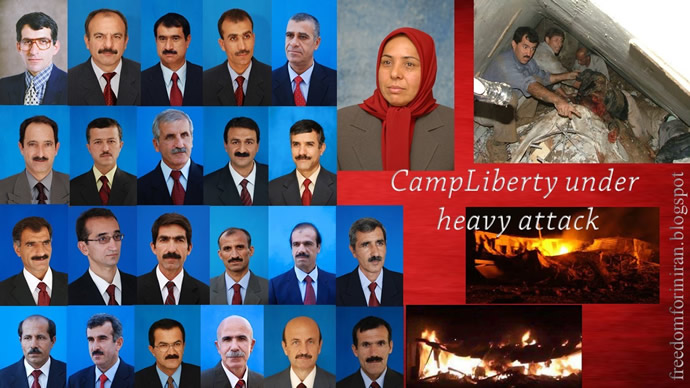
MEK’s network inside Iran
In recent years, the Resistance Units, MEK’s network of supporters and activists inside Iran has played an important role in circumventing the Iranian regime’s censorship of news and creating a flow of information to and from Iran. During the December 2017–January 2018 nationwide protests that shook the Iranian regime to its core, the Resistance Units helped procure news, pictures and videos of protests and broadcast it across the world. At a great risk to their lives, MEK’s activists gathered information about the protests and posted banners in support of regime change in Iran across the country.
The Resistance Units have continued to play a key role in other nationwide uprisings, including in 2019 and 2022. They have echoed the voice of the people of Iran in desiring regime change and rejecting a return to the deposed monarchy.
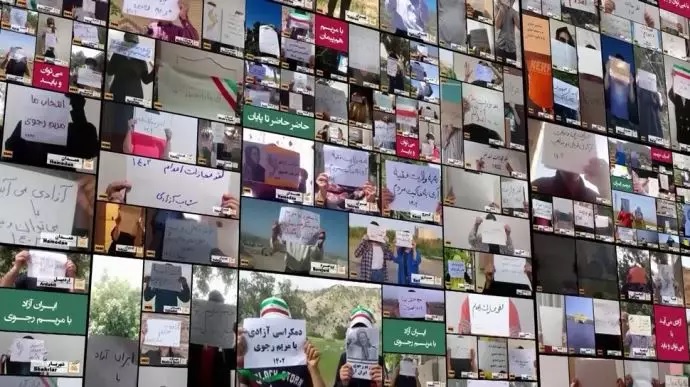
The Iranian regime’s highest-ranking officials, including its supreme leader Ali Khamenei, acknowledged the role the MEK’s network inside Iran has played in organizing the protests and preventing the regime from stifling the voice of freedom inside the country. Accordingly, the regime has engaged in extensive efforts to prevent the expansion of Resistance Units across Iran. This includes a campaign of crackdown and heavy prison sentences against PMOI supporters, and a widely publicized court case against PMOI members and their supporters. At the same time, the regime is engaging in widespread disinformation and demonization efforts against the PMOI.
However, none of the regime’s efforts have managed to stop the growing support for the PMOI inside Iran. During the Free Iran 2024 World Summit, Resistance Units from inside Iran sent 20,000 video messages to the conference to express their support for the Iranian Resistance and its platform for change in Iran.

International support for MEK
The MEK has broad international support from the Iranian diaspora as well as organizations, politicians and personalities which share the Iranian opposition’s values and goals for freedom and democracy. In the U.S. and Europe, politicians and congressional members from across the political spectrum support the MEK and NCRI and regularly attend the Iranian opposition’s gatherings and conventions to voice their support for the struggles of the Iranian people and the need to confront the Iranian regime’s terrorist and nuclear ambitions.
During the Free Iran 2024 World Summit, 4000 parliamentarians from 50 countries and 84 parliaments from around the world expressed their support for the Iranian Resistance, the PMOI, and the Resistance Units in their struggle to topple the mullahs’ regime and establish a democratic republic.
The MEK is also well appreciated in the Middle East, where the countries of the region have suffered the most from the Iranian regime’s violent interventions and support the MEK as the antithesis to the mullahs’ extremist ideology.

